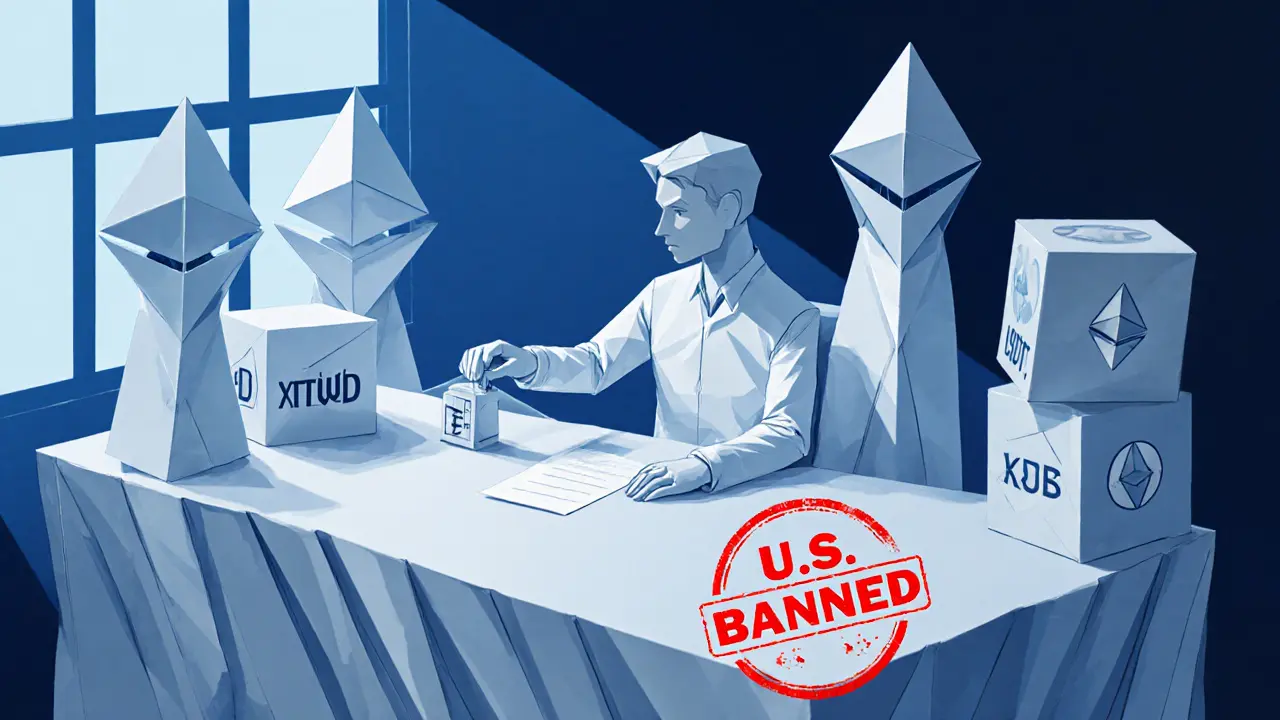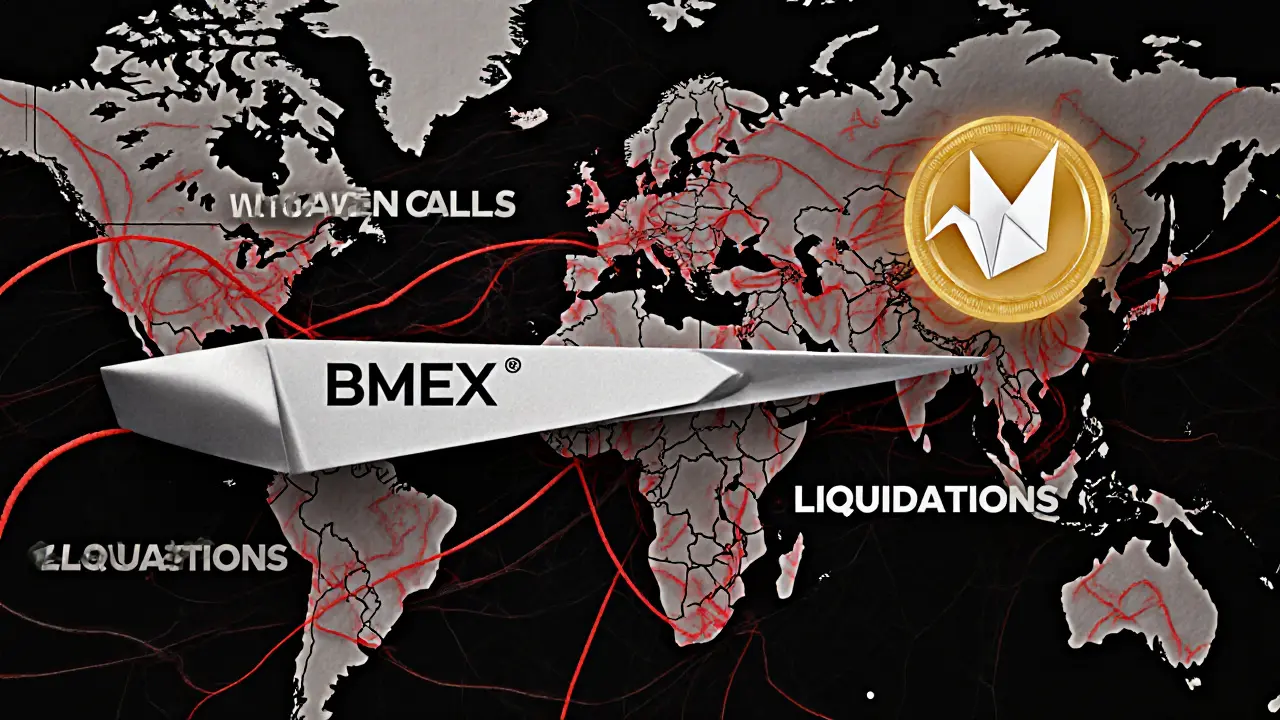BitMEX Leverage Calculator
Calculate Your Trading Risk
Understand how leverage affects your position size, margin requirements, and liquidation price. Note: 100x leverage is extremely risky and can lead to instant liquidation.
Risk Analysis
Note: BitMEX does not allow U.S. users. Trading with 50x-100x leverage is extremely risky and can result in instant liquidation. Use this calculator only as a learning tool. Actual trading involves significant risk.
BitMEX isn’t your average crypto exchange. If you’re looking to buy Bitcoin with a credit card or trade a hundred different altcoins, you’ll walk away frustrated. But if you’re a trader who understands leverage, margin calls, and order book depth - and you’re outside the U.S. - BitMEX still holds one of the most powerful trading engines in crypto history.
What BitMEX Actually Offers Today
BitMEX launched in 2014 as a derivatives-only exchange. Back then, most crypto platforms were simple buy-and-sell shops. BitMEX changed that. It introduced the XBTUSD perpetual swap, a contract that let traders bet on Bitcoin’s price without owning it. That contract alone became one of the most traded crypto products ever. Today, it still dominates trading volume. In 2022, BitMEX finally added spot trading - but don’t get excited. You’ll find only about 20 cryptocurrencies available, mostly paired with Bitcoin or USDT. That’s tiny compared to exchanges like Crypto.com, which lists over 250 coins. BitMEX isn’t trying to be a one-stop shop. It’s built for traders who want to go big on Bitcoin, Ethereum, and a few other major assets with leverage up to 100x. The real power lies in its derivatives market. The XBTUSD perpetual swap has unmatched liquidity. Traders report filling 50 BTC orders with almost no slippage. That’s rare. Most exchanges struggle to handle orders that large without moving the price. BitMEX doesn’t.Security: A Rare Track Record
Since its launch in 2014, BitMEX has never been hacked. Not once. Not a single Bitcoin stolen. That’s unheard of in crypto, where even giants like Mt. Gox and FTX collapsed under security failures. In 2021, BitMEX earned ISO/IEC 27001 certification - the gold standard for information security management. That means independent auditors checked every part of their system: how they store keys, how they monitor access, how they respond to threats. They passed with flying colors. The platform uses a multi-signature cold storage system. Most user funds are kept offline, in hardware wallets locked in secure vaults. Only a tiny fraction is held online for trading. That’s the same approach top hedge funds use. Even after the 2020 CFTC settlement, security stayed intact. The issue wasn’t hacked wallets - it was failure to follow anti-money laundering rules. That’s a compliance problem, not a technical one.The U.S. Ban and Regulatory Reality
In October 2020, the U.S. Commodity Futures Trading Commission (CFTC) fined BitMEX $100 million. The reason? The exchange didn’t verify users’ identities or block U.S. traders. It handled over $1 trillion in trades between 2014 and 2020 without proper AML checks. BitMEX settled the case. No admission of guilt. But they immediately cut off U.S. access. That ban is still active as of November 2025. If you’re in the U.S., you can’t register. You can’t deposit. You can’t even log in. This isn’t going away soon. BitMEX has no U.S. entity. It’s registered in the Seychelles. The CFTC has made it clear: no U.S. trading without full compliance. BitMEX says it’s working on a U.S.-compliant platform for 2026 - but that’s a long way off. Don’t count on it.
Trading Experience: Built for Pros
The BitMEX interface is dense. It’s not pretty. It’s not beginner-friendly. But it’s powerful. You get real-time order books, customizable charts, and tools to monitor your margin, liquidation price, and unrealized P&L in real time. You can drag and drop widgets. You can set alerts for price levels. You can view multiple timeframes side by side. The mobile app works - but it’s basic. Advanced order types like trailing stops or iceberg orders are only on desktop. If you trade on the go, you’re limited. Withdrawals are another pain point. They’re processed only at set times during the day - usually once or twice. If you need funds urgently, you might wait up to 12 hours. Free withdrawals? Only if you use Bitcoin. If you want to pull out in USDT or ETH, you pay a fee.Trading Fees and the BMEX Token
Trading fees on BitMEX are low. Maker fees start at 0.025%. Taker fees are 0.075%. That’s cheaper than most major exchanges. In 2022, BitMEX launched its own token: BMEX. Holding BMEX gives you a discount on trading fees - up to 15% off. You can also stake it to earn rewards. The token isn’t required to trade, but if you’re active, it saves money. The token’s market cap is small compared to ETH or SOL. But it’s not a pump-and-dump scheme. It’s tied directly to platform usage. The more you trade, the more value the token adds.Who Should Use BitMEX?
BitMEX is not for beginners. It’s not for people who want to HODL Bitcoin. It’s not for those who need fiat on-ramps. It’s for experienced traders who:- Understand how leverage and margin work
- Know what a liquidation price is
- Trade Bitcoin or Ethereum as their main asset
- Need deep liquidity for large orders
- Are outside the United States

What’s New in 2025
BitMEX is changing. It’s no longer just a derivatives exchange. It’s pushing its “Beyond Derivatives” strategy:- Spot Trading: Launched in 2022, still limited but growing
- Custody: Launched Q1 2025, now securing $2.3 billion in client assets
- Brokerage: Lets institutions trade via API or dedicated desks
- Academy: Free video courses, webinars, and a TestNet demo environment
- Information Products: Market data feeds and analytics tools for professional traders
What Users Say
On Trustpilot, BitMEX has a 4.1/5 rating based on over 1,200 reviews. Professional traders love the platform’s speed and depth. One user wrote: “The order book on XBTUSD is the deepest I’ve ever seen. I’ve never had a trade fail to fill.” But complaints are real. About 32% of negative reviews mention slow customer support. Tickets can take 72+ hours to get answered. That’s unacceptable for a platform handling millions in trades daily. Reddit users in r/algotrading praise the platform’s reliability. But they also warn newcomers: “Don’t use 100x leverage. You’ll get liquidated in seconds.” The BitMEX Academy has trained thousands. Their internal data shows new users need 40-60 hours to feel comfortable with margin mechanics. That’s not a flaw - it’s a reality. This isn’t a game. It’s high-risk trading.Final Verdict: A Specialized Tool, Not a Platform
BitMEX isn’t dying. It’s evolving. It’s still the top choice for professional traders who want deep liquidity in Bitcoin derivatives. Its security record is flawless. Its fee structure is competitive. Its tools are unmatched for advanced trading. But it’s not for everyone. If you’re in the U.S., you can’t use it. If you’re new to crypto, you shouldn’t use it. If you want to buy Dogecoin or pay with a credit card, look elsewhere. BitMEX is a scalpel, not a Swiss Army knife. Use it for what it’s built for - and you’ll find it’s still one of the most powerful tools in crypto.Is BitMEX still operational in 2025?
Yes, BitMEX is fully operational as of November 2025. It continues to serve traders outside the United States. The platform has expanded its services beyond derivatives with spot trading, custody, and educational tools. However, U.S. users are still blocked due to the 2020 CFTC settlement.
Can I trade on BitMEX if I’m in the United States?
No. BitMEX permanently blocked all U.S. users after the 2020 CFTC enforcement action. Even using a VPN won’t work - the platform actively detects and blocks U.S. IP addresses. Attempting to bypass this violates their terms and could lead to account suspension or legal risk.
What’s the highest leverage available on BitMEX?
BitMEX offers up to 100x leverage on its perpetual swap contracts, particularly for Bitcoin (XBTUSD). This is among the highest available on any major exchange. However, using such high leverage is extremely risky - a small price move can trigger instant liquidation. Most experienced traders use 10x-20x for better risk control.
Does BitMEX have a mobile app?
Yes, BitMEX has a mobile app available for iOS and Android. It allows you to check positions, place basic orders, and monitor your portfolio. However, advanced features like custom charting, order book filters, and trailing stops are only available on the desktop platform. The app is functional but limited for serious traders.
How long do withdrawals take on BitMEX?
Withdrawals are processed only at scheduled times - typically once or twice per day. This means you may have to wait up to 12 hours for your funds to leave the exchange. Withdrawals in Bitcoin are free. Withdrawals in other cryptocurrencies (like USDT or ETH) incur network fees. There’s no instant withdrawal option.
Is BitMEX safe to store crypto long-term?
No. BitMEX is a trading platform, not a wallet. Even though it has strong security and has never been hacked, you should never store crypto long-term on any exchange. Use a hardware wallet like Ledger or Trezor for long-term holding. BitMEX’s custody service is meant for institutional clients, not retail users.
What cryptocurrencies can I trade on BitMEX?
BitMEX supports around 20 cryptocurrencies, with the majority of trading volume focused on Bitcoin (XBT), Ethereum (ETH), and USDT. Popular pairs include XBTUSD, ETHUSD, and BCHUSD. Spot trading is available for these same assets, but the selection is very limited compared to exchanges like Binance or Kraken.
Does BitMEX offer fiat deposits?
No. BitMEX does not accept direct deposits in USD, EUR, or any other fiat currency. You must first buy cryptocurrency on another exchange (like Kraken or Binance), then transfer it to your BitMEX wallet. This adds an extra step but is standard for high-leverage derivatives platforms.




